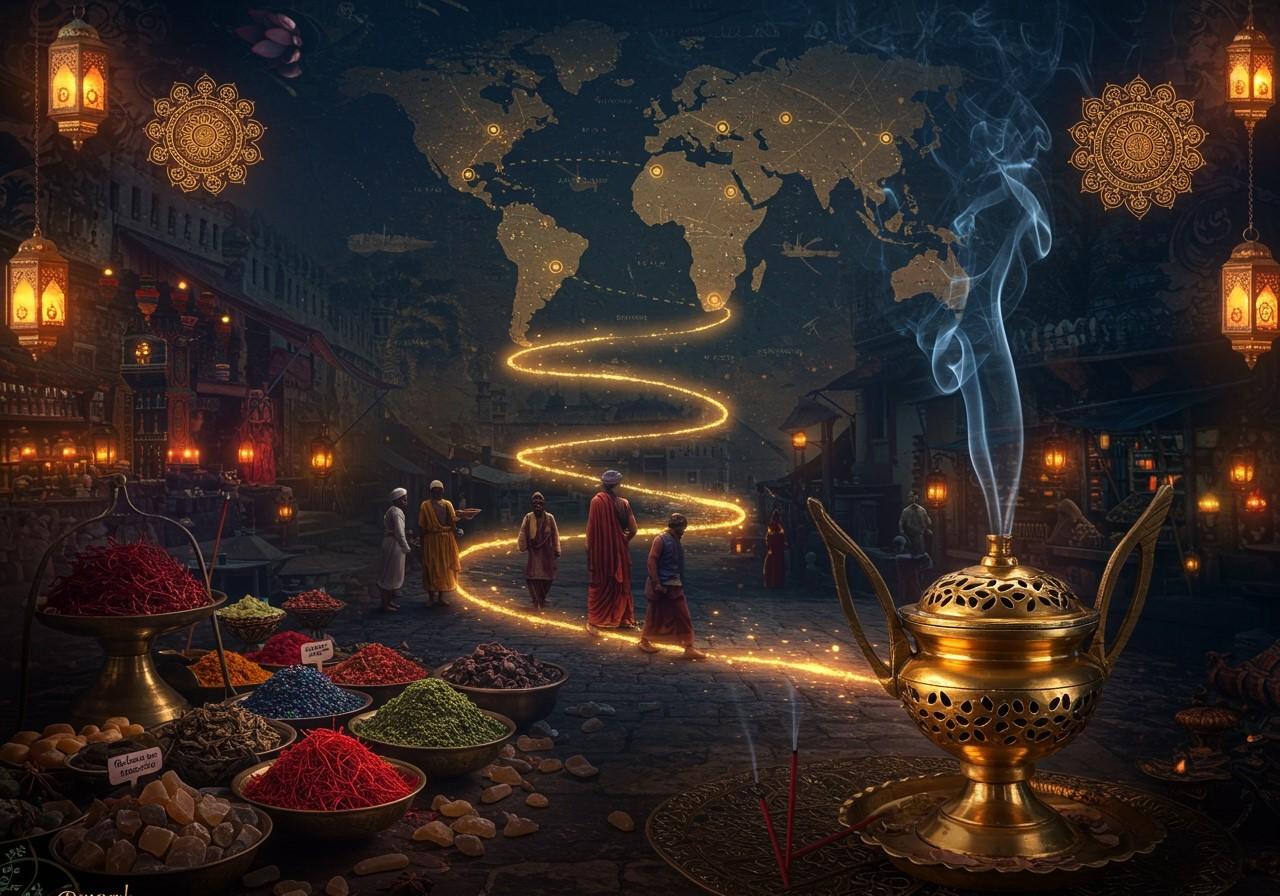
Ancient trade routes served as vital arteries, facilitating the exchange of goods, cultures, and ideas between civilizations. Among these, the Incense Route stands out as a testament to the human desire for precious aromatics. This route, connecting the southern Arabian Peninsula to the Mediterranean, played a significant role in shaping the ancient world. This exploration delves into the history of the incense trade, traces its path across historical maps, and examines its profound cultural significance.
A Journey Through Time: The Incense Trade’s Historical Background
The Incense Route flourished from the 3rd century BC to the 2nd century AD. It wasn’t merely a path for goods; it was a conduit for cultural and technological exchange between regions. Valuable commodities like frankincense and myrrh, essential for rituals, medicines, and cosmetics, traversed this route, impacting the prosperity of areas like the Negev Desert and the Nabataean Kingdom. Phoenician traders, followed by Greek and Roman merchants, played key roles in distributing these precious aromatics throughout the Mediterranean, bringing wealth and development to cities and kingdoms along the route. This trade spanned over 2,000 kilometers, linking regions like Yemen, Oman, and Saudi Arabia with ancient ports such as Gaza and Alexandria.
The Sacred Scent: Incense in Ancient Cultures
Incense held immense significance in the spiritual and daily lives of ancient civilizations. Egyptians employed it in religious ceremonies and embalming practices. Greeks and Romans incorporated incense into rituals and public events to honor their deities. Jewish traditions also recognized the sanctity of incense, using it in temple rituals. This widespread demand fueled economic growth and cultural development in the regions producing these fragrant resins.
Mapping the Aromatic Trail: Tracing the Incense Route
Historical maps and archaeological discoveries allow us to trace the Incense Route’s intricate path. Key locations include Marib in Yemen, a hub of frankincense production; Qana in Oman, a vital trading center; and Petra in Jordan, a crucial caravan stop. Modern mapping technologies provide further insights into the logistical challenges and complexities of this ancient route. These techniques help us understand the route’s geographical challenges and the sophisticated logistics required to traverse it.
A Visual Journey: The Incense Trade Route Map
A detailed map of the Incense Route reveals the intricate network of land and sea routes that connected the Mediterranean with the incense-producing regions of the East. It showcases the route’s complexity, highlighting organized caravan systems and essential rest stops that facilitated travel across challenging desert terrains. Key waypoints like Ubar, known as the ‘Atlantis of the Sands,’ and Petra, the Nabataean city carved into sandstone cliffs, underscore the cultural and economic interactions fostered by the incense trade. These stops not only provided respite but also served as points of cultural exchange and economic activity.
The Economic Ripple Effect: Impact of the Incense Trade
The Incense Route significantly impacted the economies of the Arabian Peninsula and surrounding regions. The wealth generated by the incense trade fueled the rise of powerful kingdoms and influential cities. The Nabataeans, strategically positioned in Petra, controlled the flow of goods and levied taxes on passing caravans, contributing to their architectural achievements and overall prosperity. This control over the trade allowed them to amass significant wealth, which is reflected in their impressive architectural and infrastructural developments.
Preserving the Past: Modern Exploration and Preservation Efforts
Today, researchers strive to understand and preserve the legacy of the Incense Route. Restoration projects at key sites and meticulous documentation of artifacts are ongoing. UNESCO’s recognition of parts of the route as World Heritage Sites underscores its historical importance. Continuing exploration unveils new information, deepening our understanding of ancient trade practices and the cultural exchange they facilitated. These efforts ensure that the history and significance of the Incense Route are preserved for future generations.
Experience the Tradition: Incense at Poojn.in
Poojn.in, India’s leading cultural goods and services store, offers a diverse selection of authentic incense sticks, connecting you with India’s rich spiritual heritage. Our collection features premium brands essential for daily puja and meditation:
-
Traditional Fragrances: Immerse yourself in classic scents with options like Cycle Rhythm Sandal (108g) (includes a free matchbox), Swarna Champa Agarbatti (50g) by Moksh, and other traditional Indian incense sticks.
-
Modern Interpretations: Explore contemporary takes on classic aromas with choices such as Shubh Labh Prayer Agarbatti (135g) with 6-in-1 flavors and other unique blends.
We offer convenient home delivery and wholesale pricing for temples and regular practitioners via WhatsApp at +91 7908548235. Our incense sticks are carefully sourced and quality-checked, ensuring authentic fragrances for your spiritual practices. Visit Poojn.in to discover our complete collection of incense sticks and puja supplies. We maintain ample stock to support your regular spiritual practices.
A Lasting Legacy: The Enduring Impact of the Incense Route
The Incense Route remains a powerful symbol of cultural exchange and economic interaction in the ancient world. Its legacy continues to inspire and inform, reminding us of the interconnectedness of civilizations and the enduring human fascination with precious aromatics. By studying and preserving this historical network, we gain valuable insights into the past and appreciate the profound impact of trade on shaping our world.
Learn more about incense, its art, science, and significance in puja and aromatherapy.


